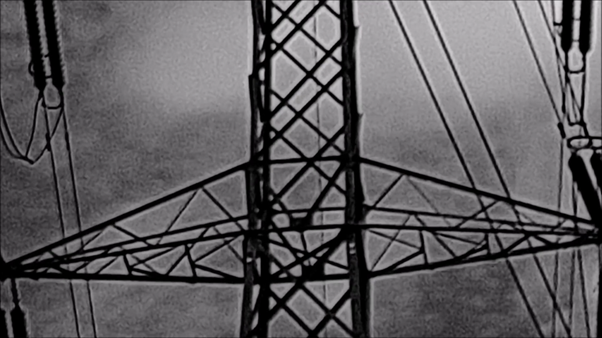
WORDS: Gareth E. Rees
EVENT: Uncanny Landscapes at The Hastings Storytelling Festival, November 9th, 7pm, Havelock Road, Hastings (FREE)
 I’ve been kindly invited to speak at this year’s Hastings Storytelling Festival.
I’ve been kindly invited to speak at this year’s Hastings Storytelling Festival.
Because it’s a festival of storytelling, I am going to tell a story.
It’s about how an erotic encounter with an electricity pylon on Hackney Marsh led to me having a religious vision in the car park of a Morrisons in Hastings seven years later.
While meandering on a dérive between those two points I’ll tell other stories – true stories, almost entirely probably true stories – about phantom bears, a cantankerous memorial bench, the submarine that became an outflow pipe, and the time I got eyeballed by a haunted concrete wall.
I’m calling this talk Uncanny Landscapes, but not because it’s all about ghosts. Although there will be ghosts. Of a kind.
I mean uncanny in its definition as ‘strange or mysterious, in an unsettling way’. I also take inspiration from Sigmund Freud, who saw the uncanny as being what unconsciously reminds us of our forbidden, repressed impulses, particularly in places or situations that make us feel uncertain.
It is my belief that all landscapes are uncanny, when you look deep enough, when you let them get under your skin, when you challenge the illusion of objective reality, when you allow your fears and urges to run riot, when you open your imagination and stop doing what you’re told or what is expected of you.
 This happens when you linger… loiter… get out of your car… walk the wrong way…. ignore the signs… change your usual route…. stop and observe… study the tiniest detail… pick things up…. smell them… touch them… challenge them… change their meaning… re-invent them.
This happens when you linger… loiter… get out of your car… walk the wrong way…. ignore the signs… change your usual route…. stop and observe… study the tiniest detail… pick things up…. smell them… touch them… challenge them… change their meaning… re-invent them.
You’ll see there’s mystery and strangeness in even the most mundane things, whether it’s an Asda car park, concrete wall, park bench or crushed Coke can.
In everything there is a story.
For instance, in my story – which is a true story, apart from the bits that aren’t – there are three carved arches in a seam of sandstone on the hill above the old town in Hastings.
Why are they there? What do they mean?
And nearby is a a memorial bench with the inscription “MAD JOHN?”
Why the question mark?
I’ll tell you about a dried river bed running through B&Q’s car park in Plymouth.
Is it an art installation, a draining system, or something more ancient?
 And the ghost of a U-Boat on a south coast beach that bleeds cretaceous dinosaur piss into the sea.
And the ghost of a U-Boat on a south coast beach that bleeds cretaceous dinosaur piss into the sea.
How can that possibly be?
And an abandoned safe by a polluted river in East London.
What will happen if I open it? What will happen if I don’t?
To find out, come along to Uncanny Landscapes and I’ll attempt an explanation involving words, photos, music and me waving my arms about.
There will be a chance at the end to ask questions and discuss the ideas I talk about. Books will be on sale. I’ll also perform a new electronic version of the spoken word piece I wrote with Jetsam, A Dream Life of Hackney Marshes, this time with accompaniment by James Wvr from the Warrior Squares.
Here’s how to get there on the evening. (The psychogeographers like to say “throw away the map and enjoy getting lost” but I say, “No, don’t to that, use Google Maps or you’ll be late for my gig.”)
The event begins at 7pm at the glass-fronted University building on Havelock Road, just down from the Tesco. Specially trained agents will be there to guide you in.
For more details, visit the festival’s website or see their Facebook page.
 ABOUT THE AUTHOR
ABOUT THE AUTHOR
Gareth E. Rees is author of Marshland: Dreams & Nightmares on the Edge of London. His work appears in Mount London: Ascents In the Vertical City, Acquired for Development By: A Hackney Anthology, An Unreliable Guide to London, Walking Inside Out: Contemporary British Psychogeography and the album A Dream Life of Hackney Marshes.








Hi, do we need to book this – or just turn up? If booking is needed I want three at least